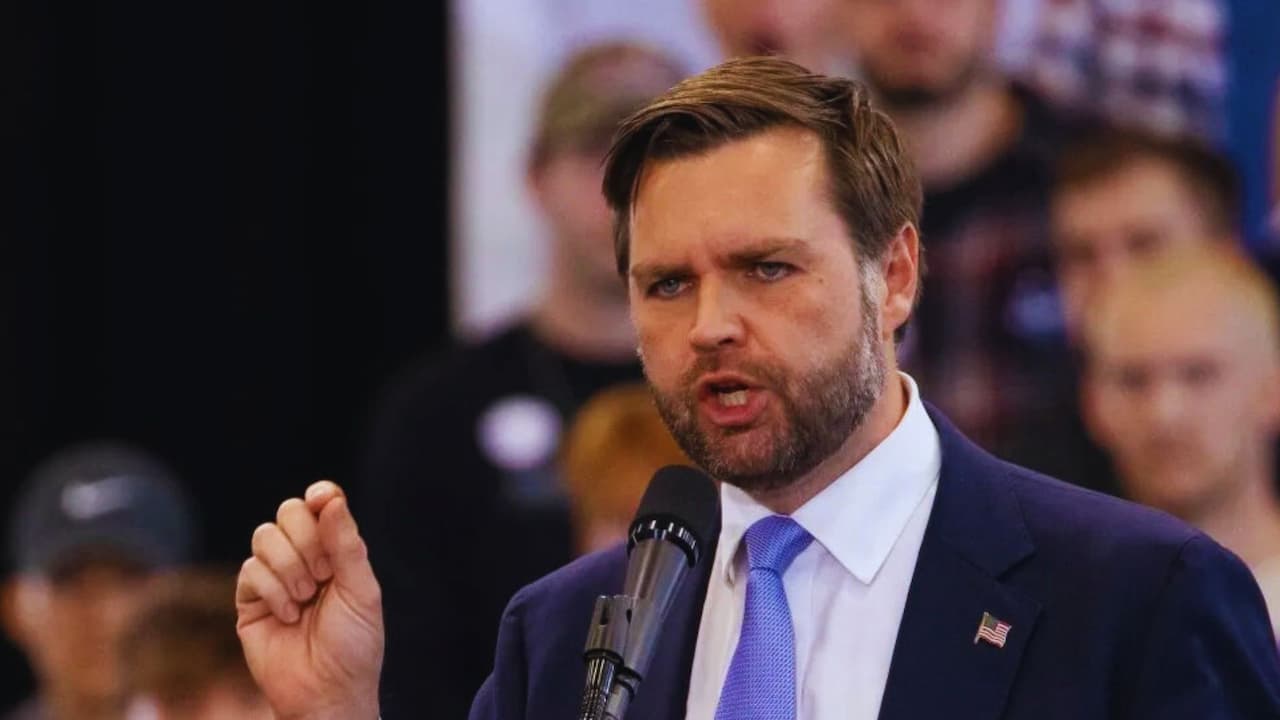Trump’s NATO Stance: Between Commitment and Demands for European Action
J.D. Vance, Republican vice presidential hopeful, has sparked fresh debate about the future of America’s commitment to NATO, offering new insights into the Trump campaign’s foreign policy vision while raising critical questions about European defense spending.
In a revealing interview on NBC’s Meet the Press this Sunday, Vance delivered a message that both reassured allies and maintained pressure on NATO partners.
The Ohio senator’s statements marked a significant clarification of Trump’s controversial February rally comments, where the former president had suggested a hands-off approach to Russian aggression against NATO members not meeting their obligations.
“Donald Trump wants NATO to be strong. He wants us to remain in NATO,” Vance stated firmly before adding the crucial qualifier about member nations needing to “carry their share of the defense burden.” This balanced approach reflects a continued push for increased European military spending while maintaining America’s strategic partnerships.
The spotlight has particularly fallen on Germany, Europe’s economic powerhouse. Despite recent increases in defense spending to 2.1% of GDP in 2024 (up from 1.5% in 2020), Germany’s military readiness remains under scrutiny. Finance Minister Christian Lindner’s recent pledge in Washington to maintain the 2% NATO target signals Berlin’s awareness of these pressures.
Some positive trends have emerged across the alliance. NATO reports show that 23 out of 32 members now meet the crucial 2% GDP defense spending target, a dramatic improvement from just nine countries in 2020. This surge in military investment, partly driven by Russia’s actions in Ukraine, represents an 18% overall increase in defense budgets this year.
Vance’s careful characterization of Russian President Vladimir Putin as an “adversary” and “competitor” rather than an enemy reveals a nuanced approach to international relations.
This stance appears aimed at keeping diplomatic channels open, particularly regarding the ongoing conflict in Ukraine, while maintaining a firm position on European defense capabilities.
The Trump campaign’s NATO policy, as outlined by Vance, represents a continuation of their “tough love” approach to international alliances. While maintaining core commitments, they’re pushing for what they see as a fairer distribution of defense responsibilities.
This strategy has already shown results—the significant increase in European defense spending since 2020 suggests that pressure tactics, however controversial, may have influenced NATO members’ military budgets.
Looking ahead, several key questions emerge:
- Will European nations maintain their increased defense spending if pressure from Washington eases?
- How might this affect NATO’s collective response to regional security challenges?
- Can the alliance balance American demands for burden-sharing while maintaining unity against common threats?
As the 2024 presidential campaign intensifies, these questions about NATO’s future and America’s role in global security will likely remain at the forefront of international discussion. What’s clear is that regardless of the election outcome, the debate over NATO members’ military spending and strategic commitments is far from over.
